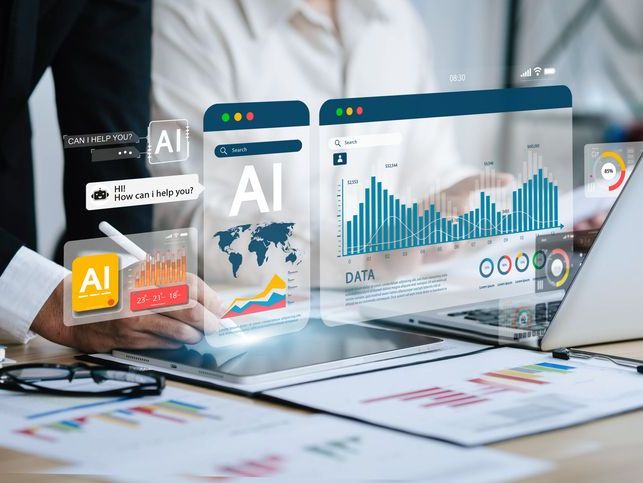Originally published in Forbes
Definitions of productivity vary widely across roles and organizations, a reality amplified by hybrid work, decentralized teams and the rapid adoption of AI. Some executives focus on outputs, others on hours worked, but broad metrics like these rarely capture the true drivers of performance such as focus, engagement and time spent on high-value tasks.
Traditional measures like revenue per employee or voluntary turnover rates highlight big-picture trends; yet, these lagging indicators often mask the inefficiencies that most impact workforce productivity. ActivTrak’s latest Workforce Utilization Benchmarks Report shows just how costly those blind spots can be.
A Wake-Up Call In The Data
The benchmark study analyzed anonymized digital activity from more than 304,000 employees across 5,600+ organizations in 23 industries. On average, companies achieve only 87% of expected productivity while paying 100% of salary costs. Nearly 60% of employees fall short of daily productivity goals, costing companies $11.2 million (based on U.S. Bureau of Labor Statistics May 2024 data released April 2, 2025) annually per 1,000 employees—the equivalent of losing 130 full-time workers every year.
These aren’t edge cases or anomalies. This is systemic underutilization—a quiet drain on workforce ROI that can go unnoticed for months, even years.
Small businesses are hit particularly hard: Those with fewer than 250 employees averaged underperformance rates of 59% and annual productivity losses ranging from $162,000 to $542,000. Larger enterprises fared slightly better but saw much larger total losses, often exceeding $3.7 million per company.
Why Productivity Gaps Go Unnoticed
Most executives assume their teams operate near full capacity—and on paper, they often are. Revenue may be growing. Projects may be shipping. But headline results and aggregate metrics often hide inefficiencies. Strong performers can mask weaker ones, and minor misalignments rarely surface in quarterly reports. By the time signals show up as missed deadlines, customer churn or margin pressure, the problems are harder and more expensive to fix.
Data from Deloitte reinforces this risk: 53% of leaders say they’re still in the early stages of building systems to measure workforce performance, and only 8% consider their organization a leader in this area. Without robust, real-time measurement, leaders lack the visibility to:
• Spot bottlenecks.
• Identify misaligned priorities.
• Detect wasted effort and investment.
This isn’t just an operational issue—it’s a strategic one. When organizations can’t see how work gets done, they struggle to scale sustainably or respond effectively to change.
AI And The New Productivity Paradigm
AI is accelerating this shift. As more organizations deploy generative AI and automation tools, the definition of productivity is evolving from “how many hours are worked” to “what kind of work creates value.”
AI has the potential to augment—or replace—routine tasks. But to unlock that potential, companies must understand how their teams spend time today. Are they focused on work that drives outcomes? Are they stuck in reactive loops of meetings, emails and busywork?
Without a clear baseline, AI risks becoming just another tool for a broken system—creating new silos and inefficiencies under the guise of innovation.
That’s why workforce analytics that show how time is spent, where workflows break down and which activities deliver impact have become mission critical.
Real Industry Disparities
ActivTrak’s Workforce Utilization Benchmarks Report also revealed striking differences across industries. Logistics firms reported the lowest untapped capacity at 9%, while computer hardware companies topped the list at 71%.
These disparities aren’t just about business models or complexity. They also reflect cultural and operational maturity—specifically, how well companies integrate productivity data into day-to-day decision making.
Sectors with strong data practices—those that integrate team-level data to guide planning, resource allocation and performance management—consistently adapt faster to market changes. They recover more quickly from setbacks. They scale more predictably.
Where Leaders Can Start
Closing workforce utilization gaps doesn’t require a major reorg or expensive transformation program. It starts with shifting from assumptions to evidence. Leaders can begin by asking:
Are we focused on the right work? Use data to confirm whether teams are focused on activities that drive business results—not just what’s urgent or easy to measure.
Do we know where the gaps are? Department and team-level metrics expose inefficiency that company-wide averages often obscure. This is where operational drag accumulates.
Can we quantify impact? When productivity gaps are expressed in dollars, not abstract percentages, it’s easier to prioritize change and secure executive support.
A 13% underutilization rate may sound like a rounding error. But if it equates to $11.2 million in lost productivity per 1,000 employees, the business case becomes crystal clear.
Make Measurement Part Of The Operating Rhythm
The best-performing organizations don’t treat productivity measurement as a once-a-year HR initiative. They embed it into how they operate—as a tool for continuous improvement, not just compliance.
This means:
• Establishing baseline utilization benchmarks
• Monitoring shifts in focus and engagement over time
• Aligning managers around a shared definition of productive work using real-time insights to balance workloads, reduce burnout and reallocate capacity dynamically
This kind of operational intelligence allows leaders to act early—before small inefficiencies become major issues. It builds trust, clarity and accountability across teams. And it ensures that talent, not just tools, remains the organization’s most valuable asset.
Why Acting Now Matters
In a climate of margin pressure, volatile market conditions and rapid technological change, leaders can’t afford to operate in the dark. Every hour of misdirected effort or underutilized talent is a drag on growth.
But there’s good news, too. Because productivity is not just a matter of hustle—it’s a matter of alignment. And alignment is something we can measure, manage and improve.
Organizations that embrace this mindset will not only reclaim lost productivity. They’ll build a more resilient, adaptive and high-performing culture—one where insight consistently drives impact.





